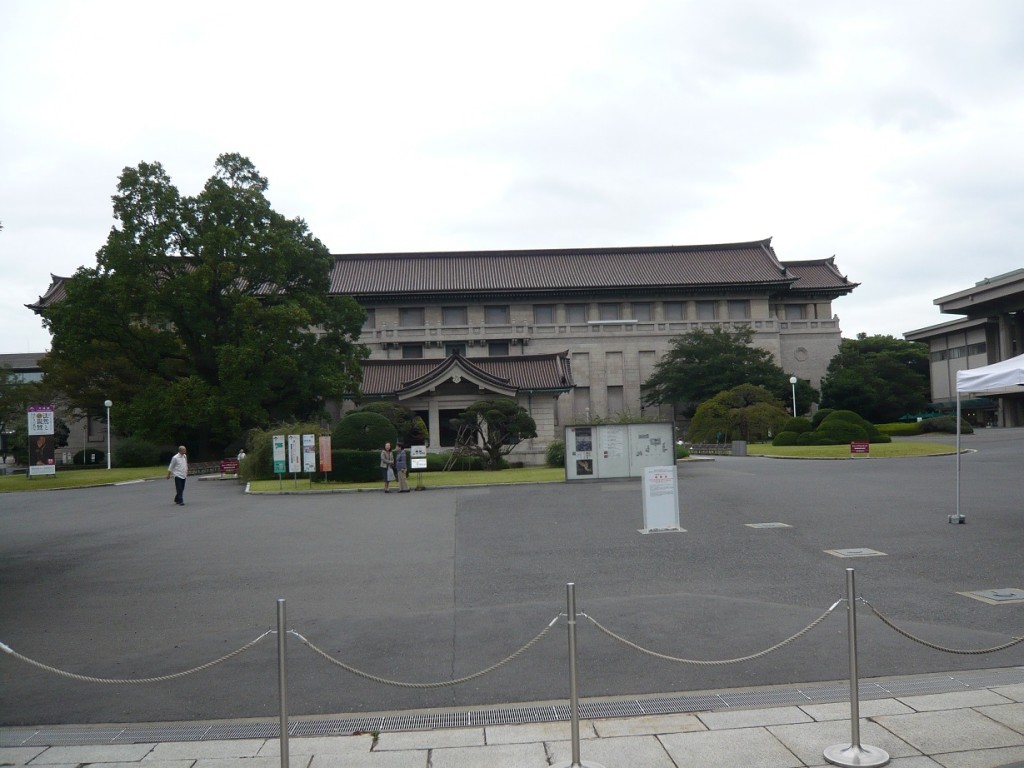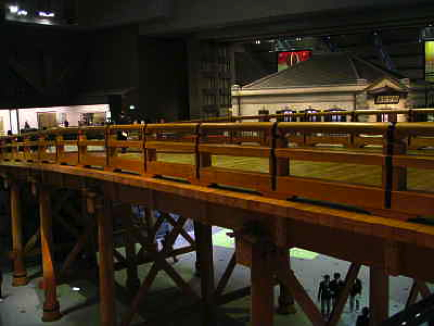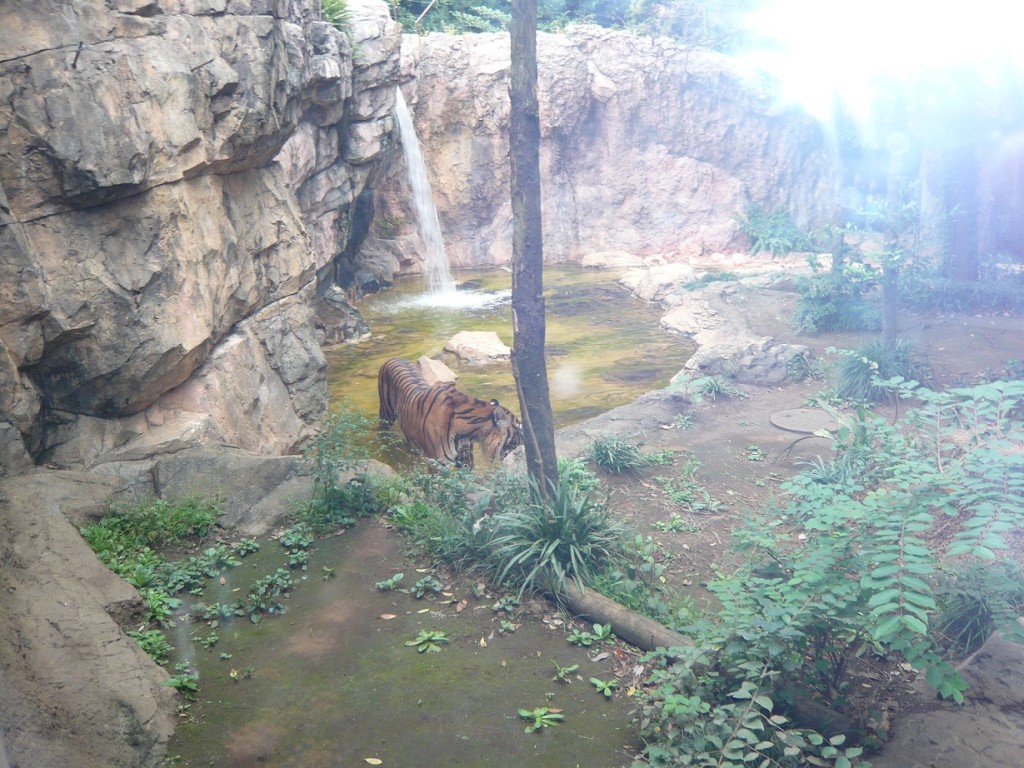Museums
 Ueno
Ueno
Ueno Park
Ueno Park is located in the Taito District of Tokyo and is famous for its gorgeous cherry blossoms which bloom in early spring. However, it is not only cherry blossoms that beckon people to Ueno. There are many popular attractions including museums, a zoo, a shrine, a temple, a concert hall and a beautiful pond.
Tokyo National Museum
 The museum holds a large number of works in fields such as painting, calligraphy, sculpture, decorative arts, and archaeology. Twenty four exhibition rooms on two floors provide a thorough introduction into Japanese art. “Highlights of Japanese Art” on the second floor introduces the development of Japanese art from the Jomon period (about ten thousand years ago) through the Edo period (1603-1868) in a chronological manner. There are also genre galleries displaying ceramics, swords, lacquerware, sculptures, and modern decorative art.
The museum holds a large number of works in fields such as painting, calligraphy, sculpture, decorative arts, and archaeology. Twenty four exhibition rooms on two floors provide a thorough introduction into Japanese art. “Highlights of Japanese Art” on the second floor introduces the development of Japanese art from the Jomon period (about ten thousand years ago) through the Edo period (1603-1868) in a chronological manner. There are also genre galleries displaying ceramics, swords, lacquerware, sculptures, and modern decorative art.
Open: 9:30am to 4:00pm
Closed: Mondays , New Year holidays(Dec 29 to Jan 1) If Monday is a national holiday,the museum is closed on the following day instead.
Admission: 600Yen
National Museum of Western Art
The galleries in this museum feature pre-18th century paintings including those by Ritzos, Van Cleve, Veronese, Rubens, Van Ruysdael, and Ribera; 19th to early 20th century French paintings including works by Delacroix, Courbet, Manet, Renoir, Monet, Van Gogh, Gauguin, and Moreau; and works by the following generation of artists, such as Marquet, Picasso, Soutin, Ernst, Miro, Dubuffet and Pollock.
Open: 9:30am to 4:30pm
Closed: Mondays , New Year holidays(Dec 28 to Jan 1) If Monday is a national holiday,the museum is closed on the following day instead.
Admission: 420Yen
National Museum of Nature and Science
This is a wonderful research museum where you can learn quite a bit about nature and science. A sample of the exhibitions include, “Nature and the Environment of the Japanese Archipelago”, ‘The Incredible World of Mammals and Birds”, “The Advance of Science and Technological Science”, “The Changing Global Environment and Evolution of Life”, “‘Solving the Riddle of the Dinosaurs”, and “Space, Matter and the Laws of Nature”.
Open: 9:00am to 4:30pm
Closed: Mondays , New Year holidays(Dec 28 to Jan 1) If Monday is a national holiday,the museum is closed on the following day instead.
Admission: 600Yen
Ueno Zoo
Established in 1882, Ueno Zoo is the oldest zoo in Japan, located only ten minutes by train from Tokyo station. Ueno Zoo not only provides recreation, but also plays an essential role in wildlife conservation and public education. In an effort to breed endangered species, the zoo completed the “Gorilla Woods” and “Tiger Forests” habitats in addition to its famous Monkey Island. You can see nearly every kind of animal, bird and reptile at Ueno Zoo.
Open: 9:30am to 4:00pm
Closed: Mondays , New Year holidays(Dec 29 to Jan 1) If Monday is a national holiday,the zoo is closed on the following day instead.
Admission: 600Yen
[ History Back ]
 Edo-Tokyo Museum
Edo-Tokyo Museum
The Edo-Tokyo Museum was founded in 1993 as a place where visitors can learn more about the history and culture of Edo and Tokyo, and the daily lives of its warriors and townspeople. Edo was the de facto capital during the Edo period (1603-1867) and renamed Tokyo in 1868.
Just beyond the entrance, visitors are transformed to another era where you cross a life-size replica of the Nihonbashi Bridge (about half its original length). From here you look out over a vast space that some say resembles more of an indoor version of a theme park than a traditional halls-and-corridors museum. The extensive Edo section of the museum eventually flows into the modernized pre and post-war Tokyo era zone of the museum.
In the Edo zone, there are numerous intricately constructed and minutely finished scale models which enable you to fully imagine what Edo was like hundreds of years ago. At the end of the Edo zone a truly gorgeous life size replication of the Nakamura Kabuki Theater Hall can be found. In the Tokyo zone you will see large models of modern Tokyo. One of them is the street in the Ginza area whose design was influenced by Regent Street in London. However, the street was burned to ashes due to the Great Kanto Earthquake in 1923.
The Edo-Tokyo Museum requires at least one hour and a half to properly view. Headphone sets for English speakers are available.
Open: 9:30am to 5:00pm
Closed: Mondays , New Year holidays(Dec 25 to Jan 1) If Monday is a national holiday,the museum is closed on the following day instead.
Admission: 600Yen

[ History Back ]
 Ohta Wood Block Print Museum
Ohta Wood Block Print Museum
 The museum was founded by Seizo Ohta (1893-1977) who was saddened that Japanese actually had to travel abroad to see Japanese wood block prints. For years he collected prints from both inside and outside of Japan eventually opening the museum for people to come and admire. The museum is located just a few minutes walk from JR Harajuku station. The number of collected items tops 12,000 and includes wood block prints by Hokusai Katsushika, Hiroshige Ando, Moronobu Hishikawa, Harunobu Suzuki and other famous artists. You can enjoy the prints as a beautiful art form while gaining a better understanding of everyday life during the Edo period which spanned from 1603 to 1867. It is fairly widely known that Japanese wood block prints strongly influenced French Impressionist painters such as Van Gogh, Monet, Manet and Renoir.
The museum was founded by Seizo Ohta (1893-1977) who was saddened that Japanese actually had to travel abroad to see Japanese wood block prints. For years he collected prints from both inside and outside of Japan eventually opening the museum for people to come and admire. The museum is located just a few minutes walk from JR Harajuku station. The number of collected items tops 12,000 and includes wood block prints by Hokusai Katsushika, Hiroshige Ando, Moronobu Hishikawa, Harunobu Suzuki and other famous artists. You can enjoy the prints as a beautiful art form while gaining a better understanding of everyday life during the Edo period which spanned from 1603 to 1867. It is fairly widely known that Japanese wood block prints strongly influenced French Impressionist painters such as Van Gogh, Monet, Manet and Renoir.
Open: 10:30am to 5:30pm
Closed: Mondays, 3 to 5 days towards the end of each month for exchange of exhibition items, New Year holidays(Dec 21 to Jan 2)
Admission: 700Yen or 1,000Yen depending on the exhibition items
[ History Back ]
 Edo-Tokyo Open-air Architectural Museum
Edo-Tokyo Open-air Architectural Museum
The Edo-Tokyo Open-air Architectural Museum was founded as an annex of the Edo-Tokyo Museum in 1993 and now displays 29 buildings (30 buildings in 2013). Each building was relocated here using original materials from its original place in Edo or later in Tokyo. In the Edo period (1600-1867), Tokyo was called Edo. The buildings are preserved as they were, giving visitors a clearer image of historical changes in terms of people’s lifestyle.
Visitors can basically enter any building such as the Farmer’s House with its thatched roof and open hearth. The private house of Takahashi Korekiyo, a famous Japanese politician, is located here and is the place where he was killed during an attempted coup d’état in Japan in 1936 (The February 26 Incident). You can also see the bath house Academy Award film director, Miyazaki Hayao, referred to in his animation film “Spirited Away”. The Open-air Architectural Museum requires at least 1 ½ hours to enjoy. It is closed on Mondays.
[ History Back ]


